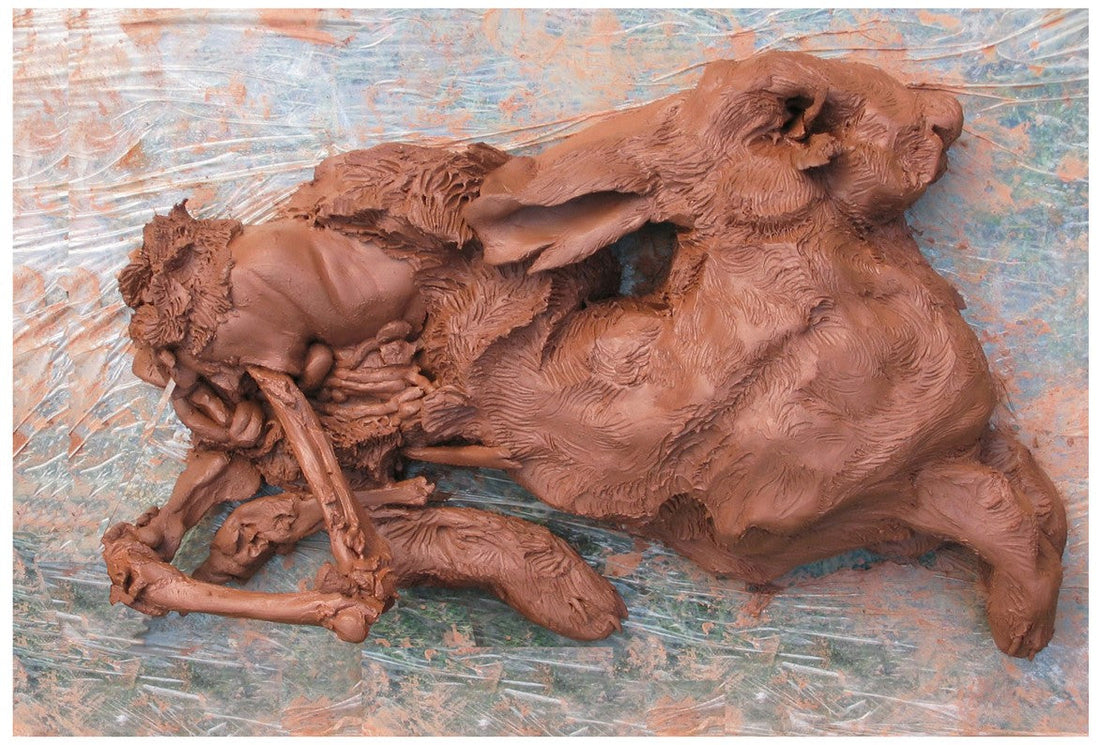Roadkill to Artwork
Memento Mori—“Remember, you must die”— paintings have been a staple genre of art since the 17th century. Memento Mori's works remind the viewer of the fragility of human life and the inevitability of death. Thus, their message urges us to enjoy the life we have been given. These works first featured skulls, hourglasses, clocks, fruit, and flowers, which gave way to many sub-genres, including vanitas still lifes and danse macabre. Contemporary artists have continued to explore and seek inspiration from death—some have done so through the unique use of roadkill. An all too common sight, roadkill lies perfectly still on the side of the road, often stiff and sometimes smeared to an unrecognizable state. This reminder of death is one that we usually ignore as we speed past, leaving the carnage of animal parts in our wake. These artists, however, turn around to examine, explore, and listen to what these unfortunate fauna have to say.
Marian Drew, Australiana Still Life (2003-2011)

Marian Drew’s Australiana Still Life takes inspiration from European still life paintings but eschews typical still life subject matter for expired wild animals. Drew collected and froze the Australian roadkill around her in an effort to explore humans' relationship to the natural world and the responsibility we have to animals who share our earth. Her resulting works feature the roadkill among fine cloth, beautifully decorated dishes, and fruit. Brightly colored birds and fruits stand in contrast with their still, somber bodies. In many of the images, the animals are placed on a plate as if they are being served to the viewer as a meal. These morbidly beautiful images are meant to “raise questions about inherited cultural and historical ideas that frame present-day perceptions of animals.”
Adam Morrigan (2009)

Adam Morrigan has made more than 30 pieces featuring roadkill. He often stitches the animals so that they are suspended in place by threads that fix them to the frame. Morrigan had previously been known to consume roadkill—but when he found a pair of small ducks that were too small to eat, he decided to turn them into an art piece. These works feel restrictive, as these creatures, once free to wander, now find themselves as corpses, tied down and contained to their frames. Morrigan has also turned his roadkill works into hats, bags, and decorative rugs.
Theodore Waddell, Hallowed Absurdities (2013-2014)

The exhibition series Hallowed Absurdities examined life, death, and the connection between human and animal beings. It featured the bones, bodies, and fur of roadkill animals. In one of these works, A Rabbit for Frank, Waddell painted thick smears of paint across the upside body of a jackrabbit that had been affixed to a white canvas. The dense coloring of the rabbit stands in stark contrast to the clean white background and to the bone of the rabbit’s feet that rest at the top of the canvas. Of these works, Waddell said, “I began to integrate them [dead animals/animal skulls] into my work as a method of dealing with death and our view of it. Our attitudes toward each other are reflected by our treatment of and response to animals.”
Martina Albertazzi and Roadkill Reno, The Desert Taxidermist (2022)
This collaboration between photographer Martina Albertazzi and taxidermist Roadkill Reno sought to highlight two things. First, the artists challenged perceptions of desert landscapes being barren and devoid of life. Second, they looked to change traditional views of taxidermy and present a more ethical version of this practice. The resulting imagery is colorful, filled with sun, and teeming with the bodies and bones of ethically sourced animals. Ethically sourced means that all of these animals were naturally found or donated. Like those of Marian Drew, many of Albertazzi’s works feel reminiscent of still life paintings; the dead animals are posed next to fresh fruit and green plant life. On her website, Albertazzi shared that these works “aim to bring the desert to life by documenting a sustainable taxidermy that doesn’t take advantage of the animals in the fragile ecosystem that we live in, but instead honors them.”
Jeanne Dunning, Found Objects (return to the world that was flat) (2022)

In this show, Jeanne Dunning collected flattened roadkill, dried them, coated them in polyurethane, and then painted them gray. The flattened animals were then arranged around a large, floral mandala fashioned from ash. The mandala is adorned with a floral design and symbolizes the cyclical nature of seasons and life. The flattened nature of the animals leaves no questions about how they died and forces the viewer to grapple with the way that animal life is disregarded by humans. Dunning wrote a poem to accompany these works that imploringly asks: “Where in the city do the seasons go? Who gets up? What remains?”
These works have reimagined traditional Memento Mori works from focusing on the fragility of human life to comment on both the fragility of animal life and how humans have failed to protect them. These artists highlight the way animals are overlooked and mistreated in the pursuit of human expansion and greed. These works transfix the viewer because they employ an object we so often overlook—roadkill—and in doing so, they spark important conversations about the relationship between humans and animals.
©ArtRKL™️ LLC 2021-2024. All rights reserved. This material may not be published, broadcast, rewritten or redistributed. ArtRKL™️ and its underscore design indicate trademarks of ArtRKL™️ LLC and its subsidiaries.






